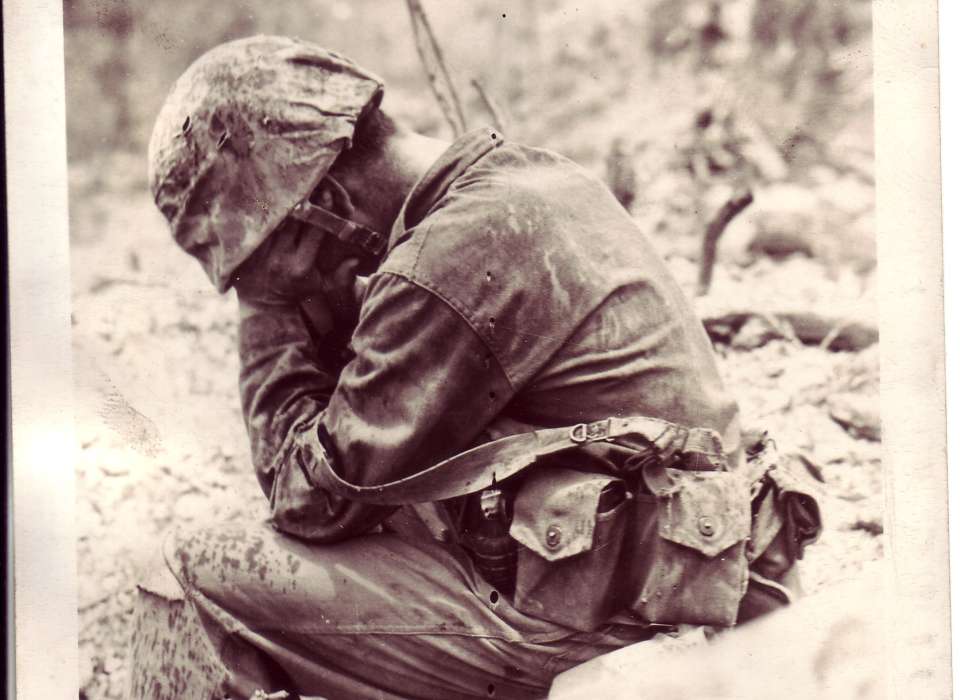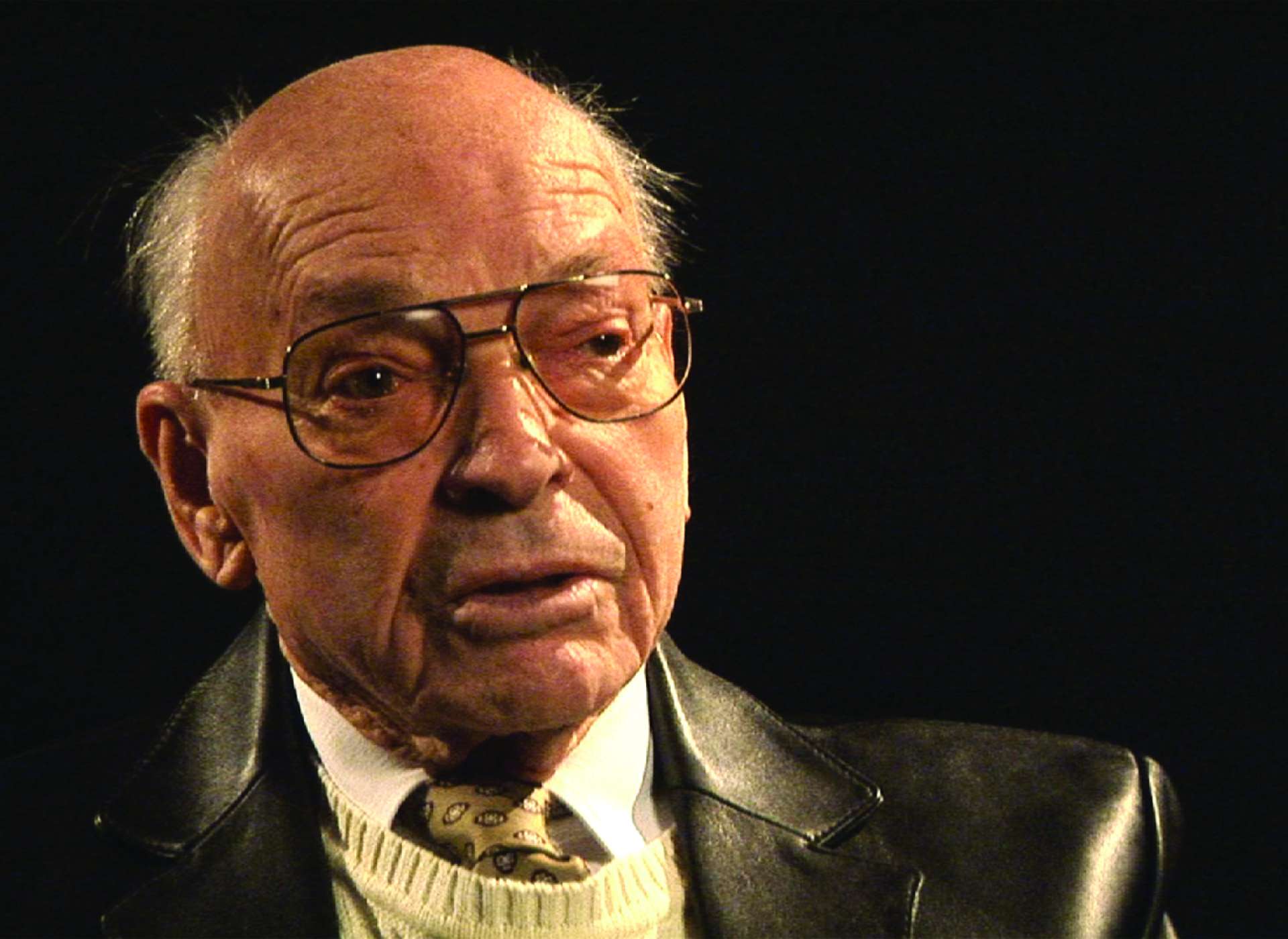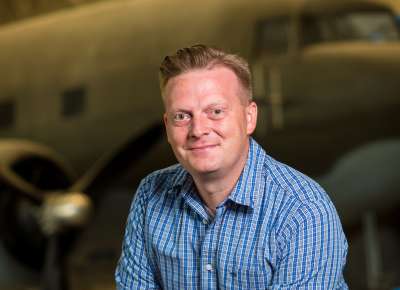A native of Danvers, Massachusetts, Frank Pomroy enlisted in the United States Marine Corps on January 4, 1942. Eager to serve his country, Pomroy took his basic training at Parris Island before joining the 1st Marine Regiment at New River, North Carolina.
In May, Pomroy and the majority of the 1st Marine Division deployed from Norfolk, Virginia, bound for an island none of them had heard of before—Guadalcanal.
On August 7, 1942, the 1st Marine Division landed on Guadalcanal and faced no enemy resistance. Within weeks, that changed drastically. Pomroy joined his comrades on Guadalcanal on August 19, by way of a destroyer following the sinking of his transport, the George F. Elliott. When he joined his fellow H Company Marines, he was immediately put to work constructing defenses along a mosquito- and crocodile-infested creek the Marines incorrectly called the Tenaru.
The 1st Marines received word of an impending Japanese assault from Jacob Vouza, a native of the island. Vouza had been captured, tortured, and left for dead by the Japanese, but managed to escape and warn the Marines of the approaching enemy. The Marines dug machine-gun emplacements along the river bank and deployed two 37mm anti-tank guns near the Tenaru’s terminus at the ocean’s edge. Pomroy, who had trained on the 37mm at New River, was assigned as a loader on the weapon closest to the water’s edge. The 37mm crews were issued canister rounds, or grapeshot, that when fired acted like enormous shotgun shells, sending thousands of large metallic balls hurtling through the air at almost point-blank range. Anything in front of the weapon when fired would be shredded. Given precious few of the devastating rounds, he and his gun crew were told to “not fire until we had the gift of an opportunity. Meaning we couldn’t shoot until we saw them in front of us.”
-

Frank Pomroy, pictured during his oral-history interview with The National WWII Museum in 2005.
-

Frank Pomroy from H-2-1 1st Marine Divison rests after 36 hours of continous combat on Peleliu in September 1944.
Pomroy and his fellow Marines would have plenty of opportunities to fire before their night was complete.
As darkness gripped the Tenaru, strange noises were heard from across the river. The Marines could hear Japanese rustling in the undergrowth, chattering amongst themselves, and weapons clanging together. Sporadic rifle shots were traded across the river beginning shortly after midnight on August 21 and continued off and on until just before 2:00 a.m., when the bone-chilling sounds of over 100 men screaming banzai broke the relative stillness of the night. The dark night erupted into a mass of gunfire when the first elements of Colonel Kiyono Ichiki’s assault units crossed the sandbar at the mouth of the river.
Frank Pomroy was at his 37mm gun when the first Japanese rushed towards his position.
“When a flare went off and you could see Japanese, we would fire this 37mm cannon with the grapeshot . . . When you fired it, all of a sudden it was all clear, you couldn’t see any Japanese. It wiped them out.”
Frank Pomroy
Several Japanese rushed towards the second 37mm gun and entered the fighting position, killing its Marine occupants. Within minutes, reinforcements from G Company retook the weapon, eliminated the attackers, and restored the defensive position. Several more direct assaults took place on the 37mm emplacements and many of the machine-gun positions along the river throughout the night before the main attack subsided. A ferocious firefight ensued between the attacking Japanese and Marine machine gunners and riflemen until daybreak.
Later in the morning, Marine riflemen crossed the river downstream, engaged the remaining Japanese, and—supported by Marine tanks—eliminated Ichiki’s detachment, taking only two prisoners. In what was in reality a small action, the Battle of the Tenaru River was an important victory for the Marines on Guadalcanal. Defeating the Japanese assault not only stopped what was the first of many attempts to retake the prized airstrip known as Henderson Field, but it also completely destroyed the myth of Japanese martial superiority with the deaths of more than 700 enemy combatants. The victory also proved to both the Japanese and American leadership that the Japanese could be beaten, and retaking Guadalcanal would not be an easy task. It would not just require “one brush of the armored sleeve,” as the supremely over confident and now deceased Colonel Kiyono Ichiki stated when asked what it would take to remove the Marines from Guadalcanal. The struggle would last for six months.
Pomroy endured the remainder of the Guadalcanal campaign, contracted malaria like so many of his fellow Marines, and was sent to Melbourne, Australia, following the division’s relief in December. Pomroy faced the enemy again on Cape Gloucester, New Britain, and finally shipped home after being wounded on hellish Peleliu in September 1944, his Pacific tour complete.
Following his discharge in 1945, Frank went to school, started a family, and enjoyed a successful business career. He remained in almost constant contact with his former comrades in arms in H Company 2nd Battalion 1st Marines, until his death on June 11, 2011, in Boxford, Massachusetts, at the age of 87.
Seth Paridon
Seth Paridon was a staff historian at The National WWII Museum from 2005 to 2020. He began his career conducting oral histories and research for HBO’s miniseries The Pacific and holds the distinction of being the first historian hired by the Museum’s Research Department. In the 12 years he was Manager of Research Services, Seth and his team increased the oral history collection from 25 to nearly 5,000 oral histories.
Cite this article:
MLA Citation:
APA Citation:
Chicago Style Citation:











